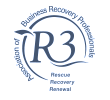HMRC company debts can be written off if a business enters formal insolvency, such as liquidation or administration. HMRC will not simply agree for company debts to be written off unless the company is being closed via an insolvency process, however, you may be able to negotiate additional time to pay your HMRC tax debts.
If your limited company has outstanding HMRC tax debts, such as corporation tax that it cannot pay, you’re probably wondering what your options are. The good news is that there are avenues you can explore to make your tax arrears more manageable, and it may even be possible to write off some or all of the debt owed to HMRC.
It’s important to note, though, that writing off HMRC tax debt is never an easy option. It will have serious implications for you and your business, and you need to understand what the consequences will be.
Before we discuss the methods you can use to have HMRC debt, such as VAT you cannot pay, written off, it’s worth exploring how you might be able to pay the bill in full.
Rather than writing off tax debt, it’s worth exploring whether you can negotiate a Time to Pay Arrangement with HMRC first. A Time to Pay (TTP) Arrangement allows you to pay your outstanding tax arrears in instalments over a typical period of between 3-6 months, although HMRC may allow up to 12 months in some circumstances.
Although it does not write off any tax debt, negotiating with HMRC to put a Time To Pay Arrangement in place allows you to clear your arrears in an affordable way and prevents further penalties from being added to the amount you owe. It’s possible to make a Time To Pay Arrangement to repay VAT, PAYE, Corporation Tax and Self Assessment arrears through your Government Gateway account or by calling the HMRC payment support service.
It may not be possible to negotiate a Time to Pay Arrangement with HMRC if you have a history of late tax submissions or the proposed payment amount is unaffordable. In that case, seeking external finance may help you clear the outstanding debt.
If you cannot access traditional debt finance like a bank loan, invoice finance enables you to raise cash quickly by releasing the money tied up in your unpaid customer invoices. Asset-based lending is another potential option. It allows you to access a loan from a finance provider using your physical assets as security. Both of these funding methods can provide a quick cash injection so you can settle your tax liabilities.
If you cannot access funding or negotiate a Time to Pay Arrangement with HMRC, it may be possible to write off some or even all of your tax liability. However, this is not an easy option. Both of the following methods involve a formal insolvency procedure, and you will need to appoint a licensed Insolvency Practitioner to put them in place.
If your company cannot pay its debts when they are due (it’s insolvent) but it’s otherwise viable and could return to profitability, a Company Voluntary Arrangement may be a suitable option. CVAs are most commonly used by businesses with multiple creditors, but they can also address single large debts, such as substantial tax arrears.
To put a CVA in place, you must work with an Insolvency Practitioner to create an affordable repayment proposal over a typical period of three to five years. Any debts that have not been repaid when the CVA ends may be written off. A CVA requires approval from the company’s creditors, including HMRC, but once it’s in place, it freezes the debt and protects the business from legal action.
HMRC may agree to a CVA that writes off some tax debt if it believes the return is better than it could expect if the company were liquidated. However, A CVA is not an easy option. Your company must make the monthly CVA payments alongside the business’s ongoing costs, so it’s a significant financial commitment. It’s also a lengthy process that negatively impacts the company’s credit rating.
Another way to write off tax debt is by liquidating the company. If your creditors do not agree to a CVA or the business is no longer financially viable, an insolvent liquidation procedure called Creditors’ Voluntary Liquidation is a responsible way to close it down.
You must appoint an Insolvency Practitioner to liquidate the company on your behalf. They will value and sell the company’s assets and use the proceeds to repay its debts as much as possible.
In liquidation, a strict hierarchy determines when creditors are paid. HMRC is an unsecured creditor for certain tax debts, putting it at the bottom of the repayment pile. That means the arrears are unlikely to be paid in full, and the outstanding sum will effectively be written off when the company is closed.
Company directors are not usually personally liable for the business’s tax debts due to the limited liability protection they receive. Limited companies and the people who run them are legally and financially separate, so business tax debts do not ordinarily pass to the directors personally.
However, there are instances when directors can become liable for tax arrears. HMRC can issue a personal liability notice to transfer all or part of a debt to a director if it believes the failure to pay is the result of negligence or fraud. An example may be a director who continues to pay themselves dividends when the company has substantial tax arrears.
Company directors can also become personally liable for tax debts if they engage in wrongful trading. Examples include continuing to trade and accruing further tax liabilities when the business is insolvent, or making preferential payments to connected creditors, such as family members or business partners, while failing to pay HMRC. In both cases, those losses can be passed on to the directors personally, and their assets may be at risk.
If your company has tax arrears it cannot pay, seek expert advice as early as possible. At UK Liquidators, we will assess your position and guide you through your options. We can negotiate with HMRC on your behalf or implement formal insolvency procedures to help you regain control. Contact our team for a free consultation or arrange a meeting at one of our 100+ offices throughout the UK.
By completing the test, you will receive:
If you are considering liquidation for your company, taking expert advice at an early stage is crucial. At UK Liquidators, our team of licensed insolvency practitioners are committed to providing limited company directors with the help and advice they need to make an informed decision.




Looking for immediate support?
Complete the below to get in touch